Japan earthquake – latest: Aftershocks continue in quake zone as death toll rises to 64
Aftershocks continued to jolt Japan on Wednesday as the death toll from a series of strong earthquakes rose to at least 64.
Earlier, Japan’s prime minister Fumio Kishida said rescuers were in a “battle against time” as the toll continued to rise.
A magnitude of 7.6 jolted Japan on Monday afternoon damaging buildings and roads, which also prompted the country to issue tsunami warnings along the coast. The tsunami warnings were later lifted on early Tuesday morning.
More than 300 people are reportedly injured and 20 of them are in serious condition.
Rescue teams struggled in freezing temperatures on Tuesday to reach isolated areas where many people are feared trapped under toppled buildings.
“The search and rescue of those impacted by the quake is a battle against time,” the prime minister said during an emergency disaster meeting.
Nearly 31,800 people are in shelters at the moment as tens of thousands of homes have been destroyed.
Key Points
Japan experienced more than 400 tremors until Wednesday morning
Survivors face freezing rain, threat of landslides
Severed road connections make it difficult to reach survivors with aid
Desperate calls for help from survivors 40 hours after earthquake
Aerial photographs show scale of devastation after Japan earthquake
12:54 , Chris Stevenson
We are pausing our live coverage for now. Thanks for reading. Our latest report is here.
Drone footage shows devastating aftermath of deadly Japan earthquakes
12:15 , Maroosha Muzaffar
Hundreds still trapped under rubble
11:30 , Maroosha Muzaffar
Days after the 7.6-magnitude earthquake, hundreds of people are still believed to be trapped under rubble.
By 8am today, nearly 130 requests for the rescue of people trapped under collapsed structures had been recorded, according to the Japan Times.
In Suzu alone, more than 72 rescue requests remained pending.
In the areas of Noto, Anamizu, and Nanao, a total of over 60 people were isolated and cut off from any aid.
“It has been over 40 hours since the earthquake and there continue to be many reports of people who need rescue,” prime minister Fumio Kishida said this morning.
“We must keep in mind that this is a race against time and continue to put all our labour into rescue efforts, with life-saving as our top priority.”
The likelihood of survival significantly drops after 72 hours following an earthquake.
Aerial photos capture capsized boats in the Suzu city harbour in the aftermath of 7.6-magnitude earthquake
10:45 , Maroosha Muzaffar
The aerial photos show capsized boats in the harbour of the city of Suzu, Ishikawa prefecture on 3 January 2024, after a major 7.6 magnitude earthquake struck the Noto region in Ishikawa prefecture on New Year’s Day.
Japanese rescuers scrambled to search for survivors on 3 January as authorities warned of landslides and heavy rain after a powerful earthquake that killed at least 64 people.
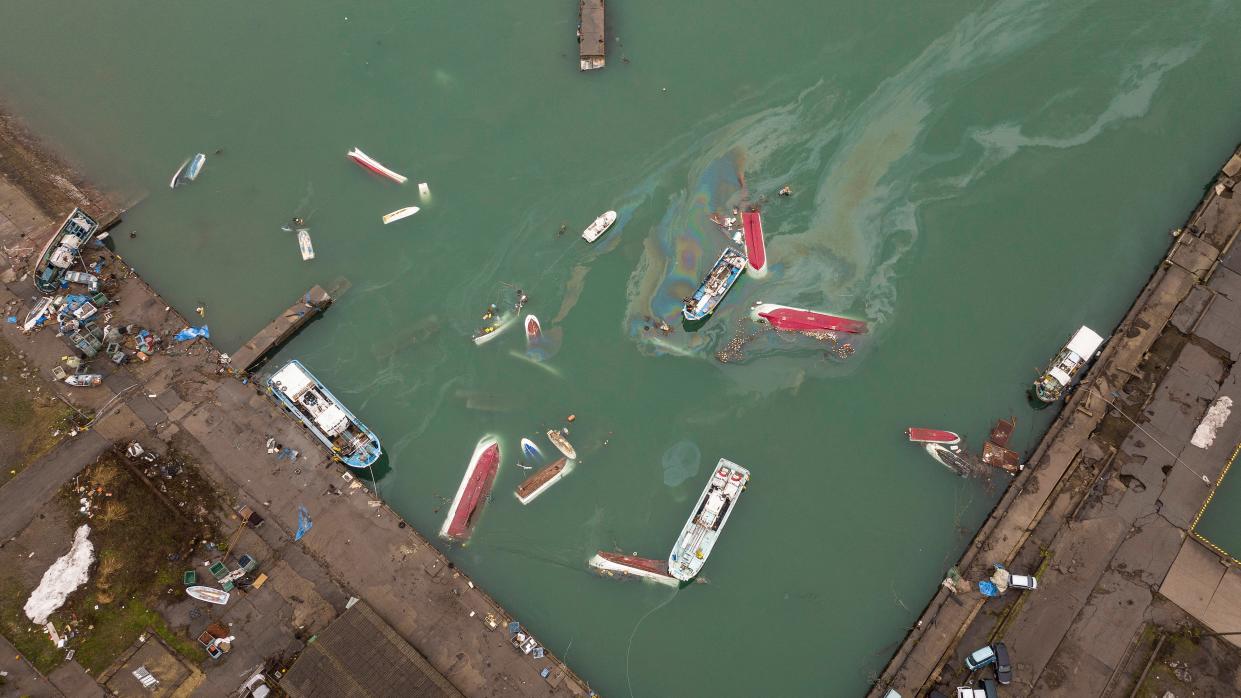
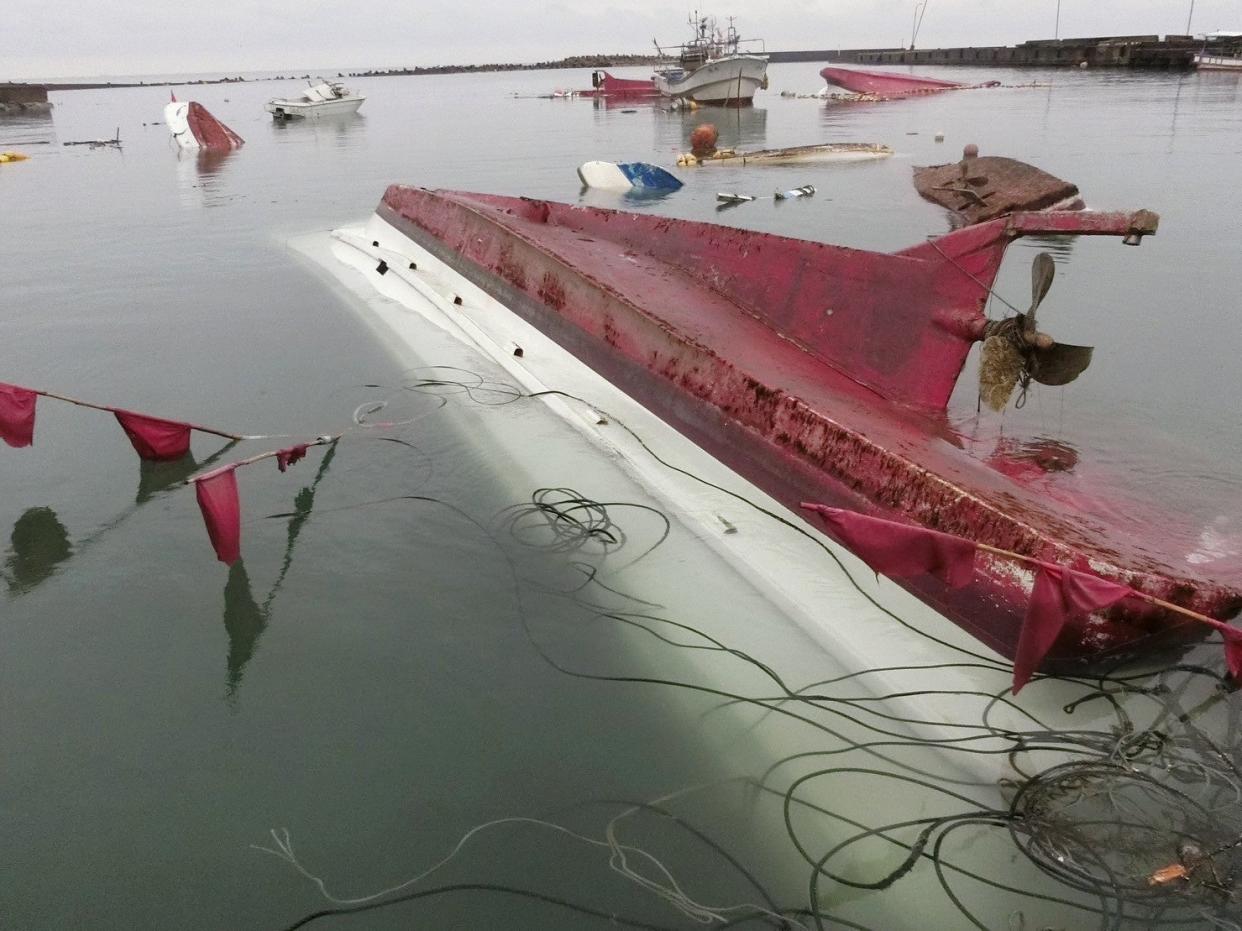
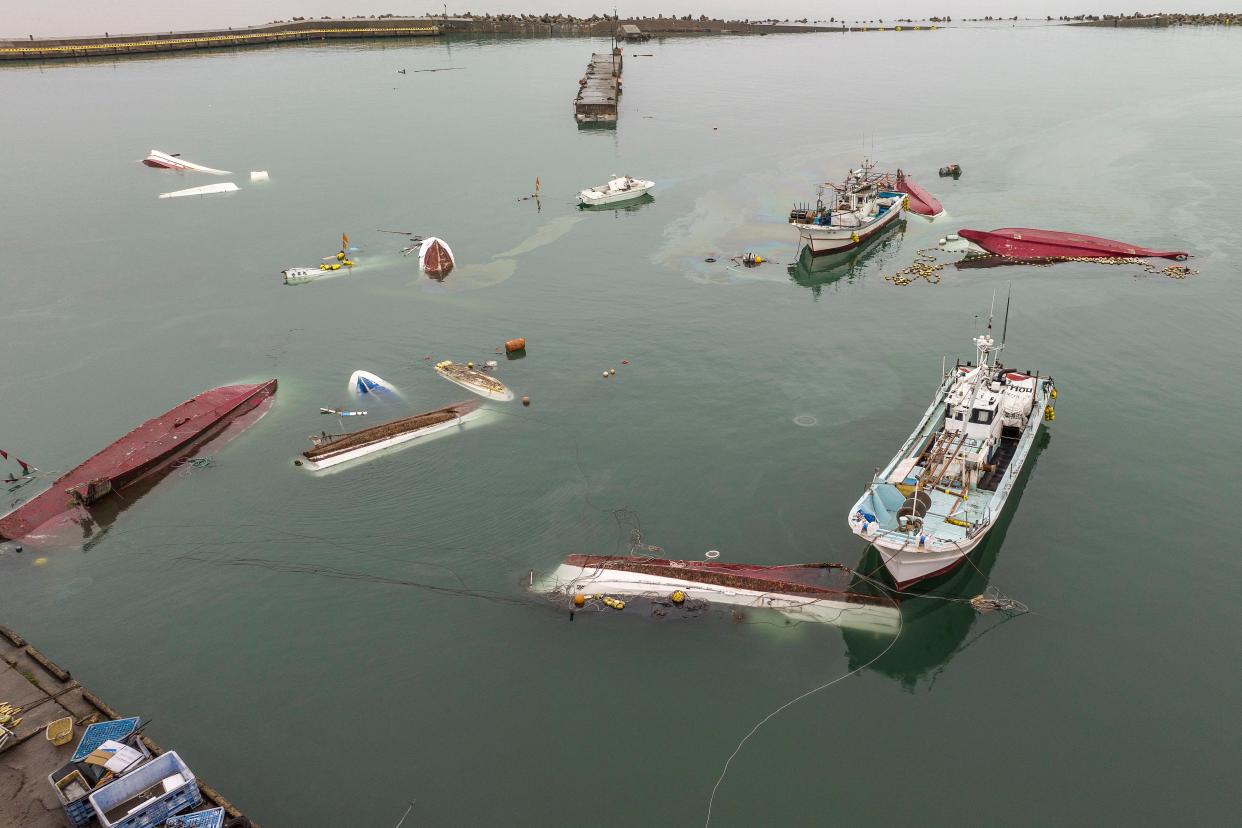
Reverse fault responsible for 7.6-magnitude earthquake in Japan
10:00 , Maroosha Muzaffar
The fault responsible for the devastating earthquake in Japan on New Year’s Day might extend approximately 150 kilometres beneath the Noto peninsula, a government panel of experts revealed yesterday.
They indicated that aftershocks are expected to persist for the time being.
The panel said that the magnitude-7.6 earthquake was likely triggered by a reverse fault — which is characterised by the upward displacement of the upper hanging wall away from the footwall.
The USGS website defines reverse fault as “a dip-slip fault in which the upper block, above the fault plane, moves up and over the lower block”.
This type of faulting is common in areas of compression, it says, “such as regions where one plate is being subducted under another as in Japan”.
The area of tectonic activity has been expanding in and around the region, they said.
Japan earthquake: Passengers run for cover as train station shakes and water pours through ceiling
09:15 , Maroosha Muzaffar
Seismology experts caught off guard over intensity of 1 January earthquake
08:30 , Maroosha Muzaffar
Seismology experts warned of potent aftershocks in the days ahead as they grappled with understanding the factors behind the New Year’s Day magnitude-7.6 earthquake in the Noto region of Ishikawa prefecture.
Junichi Nakajima, a professor of seismology at Tokyo Institute of Technology told the Japan Times that it was extremely large for a land-based quake.
“Generally speaking, an earthquake swarm does not produce a quake with a magnitude over 6. To be honest, I am surprised because this means a fault moved over a wide area,” he said.
The Noto peninsula has experienced occasional strong jolts over the past three years, although experts say that none have approached the magnitude of the one on 1 January.
Naoshi Hirata, professor emeritus of seismology at the University of Tokyo who also chairs the government’s Earthquake Research Committee said: “I cannot make a conclusive statement until I peruse the detailed data because the focus is close (to other large quakes in the region),” he said. “But I believe this was the biggest in this latest spate of seismic activity.”
He said that the magnitude of the earthquake on 1 January exceeded that of both the 2016 Kumamoto earthquake and the 1995 Great Hanshin earthquake, which resulted in approximately 6,400 casualties.
Terrifying moment Japan earthquake leaves car passengers petrified
07:45 , Maroosha Muzaffar
Japan experienced more than 400 tremors until Wednesday morning
07:00 , Maroosha Muzaffar
According to the Japan Meteorological Agency (JMA), more than 400 aftershocks have struck the region as of this morning.
The 7.6-magnitude earthquake on New Year’s Day was followed by hundreds of aftershocks, with officials warning these could continue for up to a week.
Some regions in the Noto peninsula, the epicentre of the initial quake, remain cut off due to damaged roads, landslides and large fires.
“To secure the route there, we are to mobilise all the means of transport, not only on the ground but also by aerial and marine transport. We have been making an effort to transfer goods, supplies and personnel there since last night,” prime minister Fumio Kishida said.
Survivors provided with water and blankets as search dogs join rescue teams
06:30 , Maroosha Muzaffar
Rescue agency officials are distributing water, blankets, food and other supplies today to the survivors of the massive earthquake in Ishikawa.
In some of the earthquake-hit regions, power, water and cell phone service were still down.
“Hardly any of the homes are standing. They are either partially or totally destroyed,” said Masuhiro Izumiya, the mayor of Suzu city.
Search dogs have also joined the rescue efforts besides firefighters and the military. Dozens of people are still believed to be trapped under rubble.
Watch: Twitch streamer catches moment powerful earthquake strikes Japan
06:12 , Maroosha Muzaffar
ICYMI: Japan’s nuclear power plants unscathed from earthquake
05:50 , Maroosha Muzaffar
Japan’s nuclear power plants along the Sea of Japan coast remained largely unscathed from the New Year’s Day earthquake that struck the Noto peninsula in Ishikawa prefecture.
Despite the 7.6 magnitude quake triggering tsunami warnings – that were later lifted — and evacuations in nine prefectures, Japan Times reported, that the incident could renew public concerns about the safety of nuclear power in an earthquake-prone country.
Survivors share heartwrenching stories after quake destroyed their homes
05:30 , Maroosha Muzaffar
Yasuhiro Kano, a resident of Suzu’s Horyu district, evacuated his mother in time just as his house was collapsing.
His two-story home was destroyed in the earthquake. Since New Year’s Day, he has moved to two shelters but now worries about food and rescue.
“At first I thought the shaking was the usual 4 or 5 on the Japanese seismic scale, but soon the vertical shaking came, and the house collapsed,” the 50-year-old told the Asahi Shimbun newspaper.
“My house has completely collapsed. I don’t know what will happen now. I don’t even know how long it will take to recover. I have nothing but anxiety,” he added.
A British tourist visiting Japan, Emma Ward, told BBC that the quake hit “without warning”. She was on a ski holiday with her group and as the massive tremor struck the region, she took shelter under a table in the cafe.
“The worst part during the earthquake was not knowing how intense it was going to become. It’s a very frightening experience.”
World leaders offer support to Japan after devastating earthquake kills 62
05:23 , Maroosha Muzaffar
The United States, the UK and Canada offered support to Japan after the major earthquake that has so far killed 62 people.
Joe Biden said in a statement that the United States will provide “any necessary assistance for the Japanese people”.
British prime minister Rishi Sunak said: “We stand ready to support Japan and are monitoring developments closely.”
Canadian prime minister Justin Trudeau said on X/Twitter: “My thoughts are with the people of Japan following the devastating earthquake. To Japan, our partner and friend: Canada is standing with you, ready to extend a helping hand.”
French president Emmanuel Macron expressed solidarity with Japan, saying that the country can count on France’s support. “Solidarity with Japan which must overcome the consequences of strong earthquakes.
“We share the immense pain of the victims’ families.
“Dear @kishida230, you can count on the support and help of France.”
Drone footage shows devastating aftermath of deadly Japan earthquakes
05:09 , Maroosha Muzaffar
In Photos: Devastating earthquake kills 62 and injures over 300 in Japan
04:55 , Maroosha Muzaffar
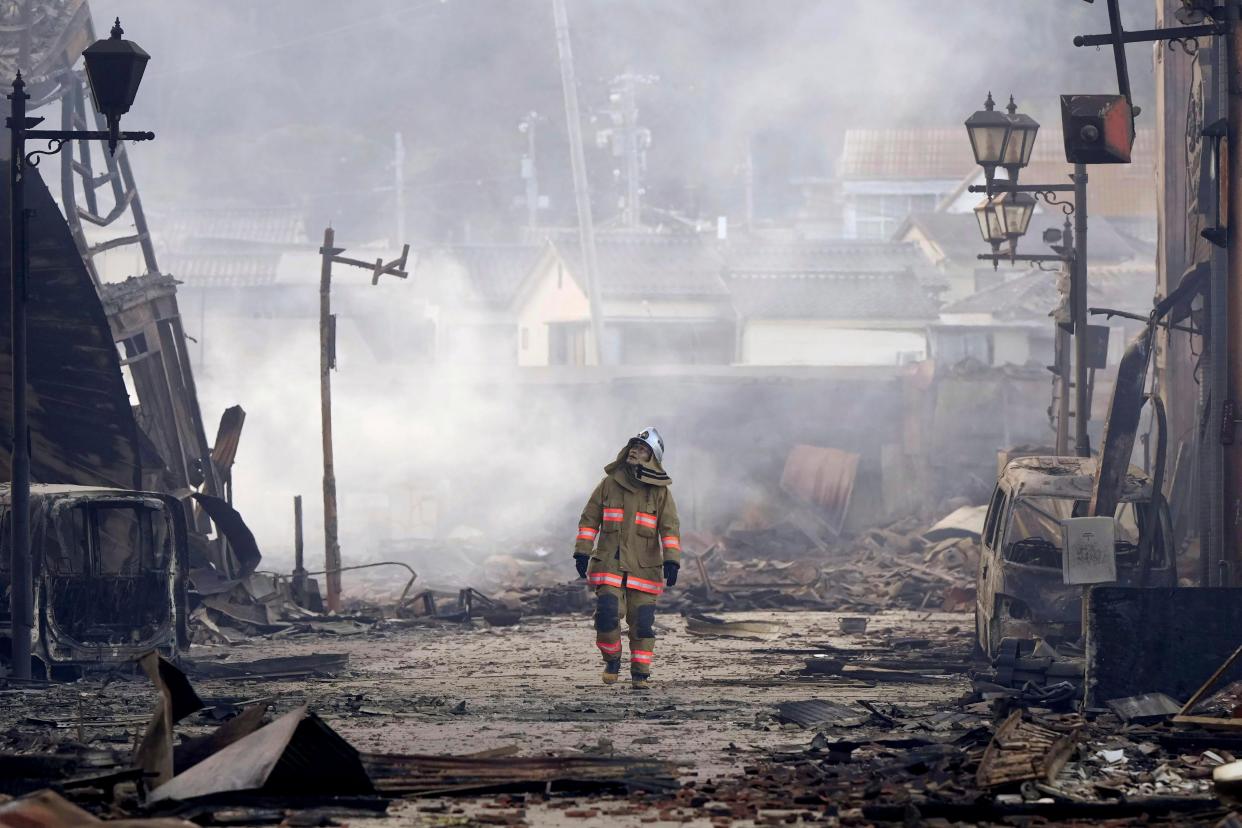
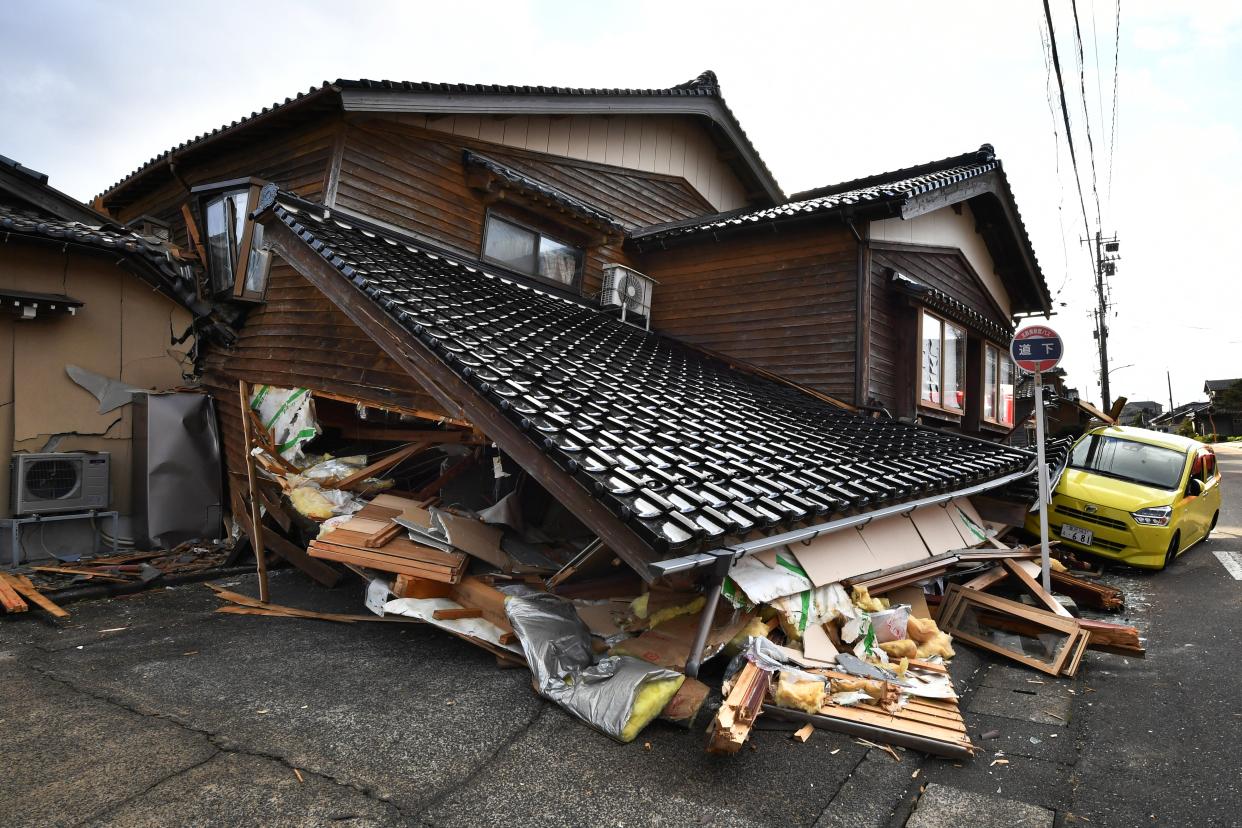
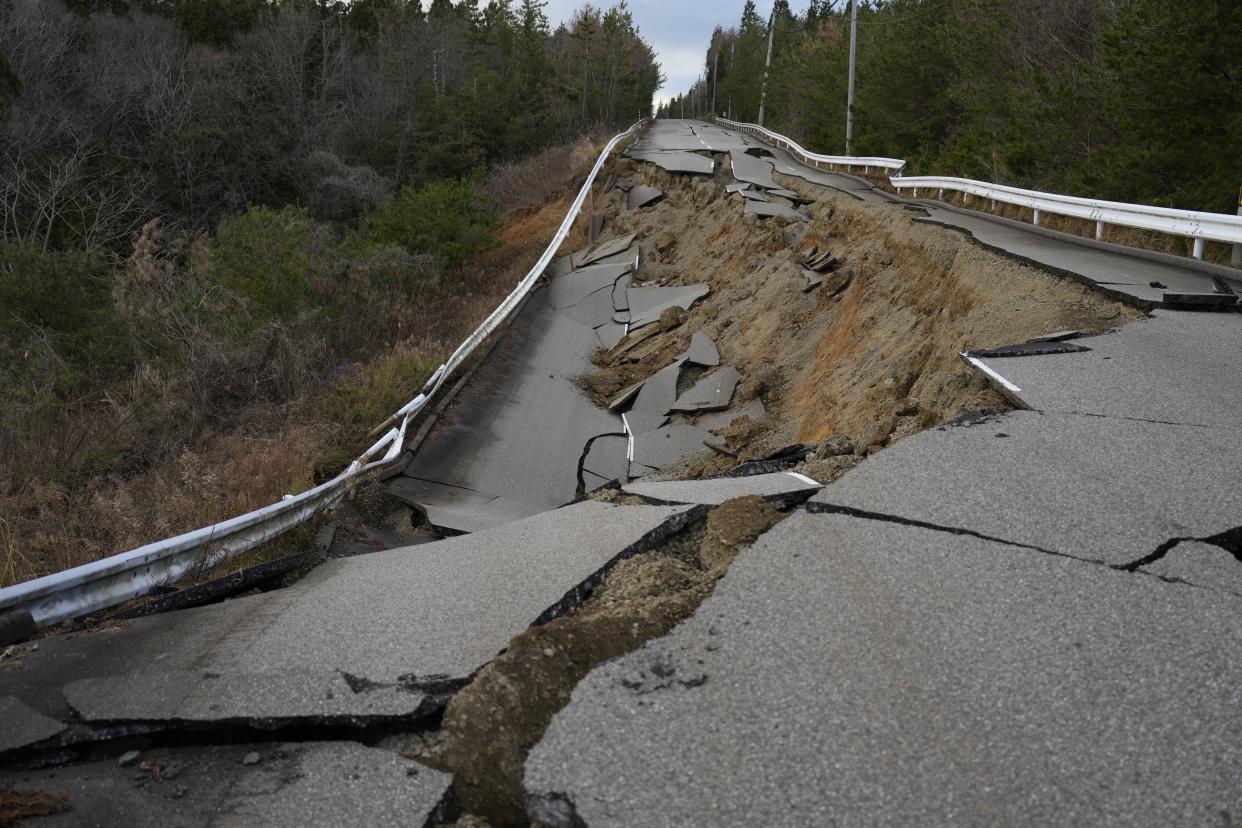
Severed road connections make it difficult to reach survivors with aid
04:30 , Maroosha Muzaffar
There are significant difficulties in accessing the northern Noto peninsula in Japan – the worst-hit quake region – due to severed road connections to Wajima and Suzu, local media reported.
The Ishikawa prefecture’s Noto peninsula was most severely hit in the 7.6-magnitude devastating earthquake.
Roads leading to Noto Airport in Wajima are inaccessible, with extensive cracks exceeding 10 centimetres in depth and over 10 metres in length on the runways, the Asahi Shimbun newspaper reported.
In response, officials are now planning to use sea routes to transport relief supplies to the survivors and rescue teams.
Aerial photographs show scale of devastation after Japan earthquake
04:20 , Maroosha Muzaffar
Japanese rescue officials shared the first images on Tuesday showing the scale of devastation in the hard-to-reach areas worst hit by a massive 7.6-magnitude earthquake that triggered tsunami warnings across the region on New Year’s Day.
The powerful quake struck the northern Ishikawa prefecture on Japan’s main central island of Honshu on Monday, prompting thousands of people in coastal regions to flee to higher ground as tsunami waves hit the western coast.
More:

Aerial photographs show scale of devastation after Japan earthquake
'Almost no houses are standing' in quake-hit towns
03:57 , Maroosha Muzaffar
Mayor Masuhiro Izumiya reported a grim scene in the coastal city of Suzu, stating that “almost no houses are standing”.
He revealed that approximately 90 per cent of the town’s houses are either entirely or nearly destroyed and described the situation as “truly catastrophic”.
The 7.6-magnitude quake jolted Ishikawa prefecture on the main island of Honshu. The prefecture’s Noto peninsula was most severely hit and many buildings were flattened especially in the towns of Wajima and Suzu among others.
According to a report from the Japanese government last year, there has been a consistent rise in the frequency of earthquakes in the Noto peninsula region since 2018.
Desperate calls for help from survivors 40 hours after earthquake
03:40 , Maroosha Muzaffar
Prime minister Fumio Kishida revealed that more people are in need of help many hours after the devastating earthquake struck the region.
“More than 40 hours have passed since the disaster. We have received a lot of information about people in need of rescue and there are people waiting for help,” he said today after an emergency taskforce meeting.
“Rescue efforts are being made by the local authorities, police, firefighters and other operational units, while the number of personnel and rescue dogs is enhanced.
“However, we ask you to remain fully mindful that we are in a race against time and to continue to do your utmost to save lives, putting people’s lives first.”
Survivors face freezing rain, threat of landslides
03:31 , Maroosha Muzaffar
Survivors of the massive earthquake are now battling freezing rain and threats of landslides, authorities said.
Heavy rains are forecast in the quake-hit region today giving rise to fears of landslides.
Japanese prime minister Fumio Kishida urged his government to ensure that the survivors had access to basic amenities including electricity and water.
“Please do everything in your power to rescue as many people as possible, while keeping in mind that this is also a battle against time,” Mr Kishida said yesterday during a disaster response meeting.
03:26 , Maroosha Muzaffar
Good morning and welcome to the Independent’s liveblog on Japan’s devastating earthquake in which 62 people have died. Several aftershocks were triggered after the strong 7.5 magnitude quake in the region and 300 are reportedly injured. Tens of thousands of homes in Japan were flattened in the earthquake and thousands are in shelters at the moment. In this blog, we’ll provide you with the latest on the situation on ground:
